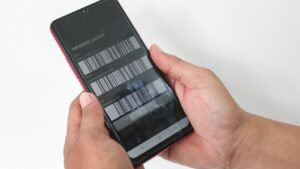Navigating through mobile apps to find specific information can sometimes be a daunting task, especially when it’s about locating something as crucial yet elusive as an IMEI number. For AT&T users, the company’s app provides a streamlined solution to access this vital piece of information, essential for everything from upgrading phones to troubleshooting device issues. Understanding how to swiftly find the IMEI number through the AT&T app not only saves time but also enhances user experience and security.
How to Find IMEI on ATT App
Finding the IMEI number on the ATT app is straightforward, allowing users to quickly access vital information required for various mobile phone services.
What Is an IMEI Number?
 An IMEI (International Mobile Equipment Identity) number is a unique 15-digit code assigned to every mobile device. This number serves as an identity certificate for the phone, setting it apart from other devices. Unlike phone numbers which can be transferred between devices, an IMEI is fixed to the device from the moment it’s manufactured. Moreover, knowing the IMEI is beneficial for users who are looking to unlock their phones for use with different carriers.
An IMEI (International Mobile Equipment Identity) number is a unique 15-digit code assigned to every mobile device. This number serves as an identity certificate for the phone, setting it apart from other devices. Unlike phone numbers which can be transferred between devices, an IMEI is fixed to the device from the moment it’s manufactured. Moreover, knowing the IMEI is beneficial for users who are looking to unlock their phones for use with different carriers.
Why Knowing Your IMEI Is Important
Knowing your IMEI number is crucial for several reasons. If a phone is lost or stolen, the IMEI can be reported to the carrier to block the device, preventing unauthorized use. Additionally, during service checks or when claiming a warranty, the IMEI provides a reliable identification of the phone beyond mere brand and model descriptions.
Navigating the AT&T App
Downloading and Setting Up the AT&T App
 To begin using the AT&T app, users must first download it from the App Store or Google Play Store depending on their device. After downloading, they’ll need to install the app and proceed with setting up their account. Setting up involves entering their AT&T user ID and password. If a user doesn’t have an account, they can easily create one within the app by providing their phone number and some personal information for verification purposes. Once logged in, users can manage their account settings, view service plans, and access their phone information, including the IMEI number.
To begin using the AT&T app, users must first download it from the App Store or Google Play Store depending on their device. After downloading, they’ll need to install the app and proceed with setting up their account. Setting up involves entering their AT&T user ID and password. If a user doesn’t have an account, they can easily create one within the app by providing their phone number and some personal information for verification purposes. Once logged in, users can manage their account settings, view service plans, and access their phone information, including the IMEI number.
Overview of AT&T App Features
The AT&T app offers a range of features designed to enhance the user experience. Key functionalities include viewing and paying bills, checking data usage, and adjusting plan settings. Additionally, users can access device support for troubleshooting common issues. For those needing to locate their IMEI number, the app provides a detailed section under the ‘Device’ tab. Here, users can select their device to view its specifications and status, where the IMEI number is prominently displayed.
Step-by-Step Guide to Find IMEI on the AT&T App
 Finding your device’s IMEI number through the AT&T app is straightforward. Follow these steps to locate the IMEI quickly and effortlessly:
Finding your device’s IMEI number through the AT&T app is straightforward. Follow these steps to locate the IMEI quickly and effortlessly:
-
Download and Install the App: Ensure the AT&T app is installed on your device. If it’s not, download it from the App Store or Google Play Store. Open the app once installed.
-
Log In to Your Account: Use your AT&T username and password to log into the app. If you don’t have an account, you’ll need to create one by following the on-screen instructions.
-
Navigate to the ‘Device’ Tab: After logging in, locate the ‘Device’ tab at the bottom of the screen. Tap on it to access your device details.
-
View Device Information: In the ‘Device’ section, scroll through the options until you find ‘Device Information’ or a similar category. Select it to view detailed information about your phone.
-
Locate the IMEI Number: Within the device information, you’ll see various details about your device. Look for the ‘IMEI’ which is usually listed alongside other specifications such as the model number and software version. The IMEI is a 15-digit number unique to your device.
-
Record or Copy the IMEI Number: Once you find the IMEI number, you may want to write it down or copy it for future reference, especially if you need it for service checks, insurance purposes, or in case of a lost or stolen device.

